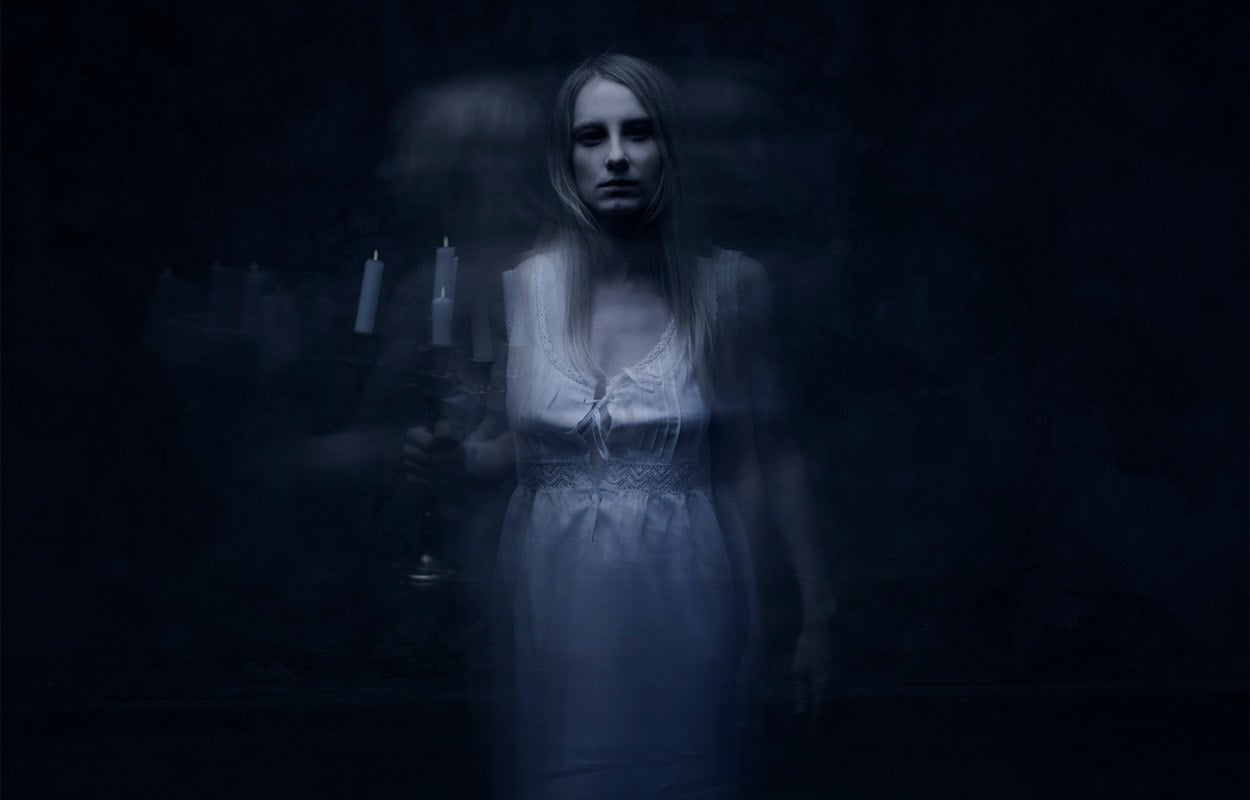
New Orleans is known for a few things: beignets from Cafe du Monde, the mighty Mississippi River winding its way down to the Gulf of Mexico, beautiful architecture and scenic streets. But if there is one thing that the Crescent City had to be recognized for, it would be . . .
Its ghosts.
Don’t laugh, it’s true! If you’ve made your way down to New Orleans in the past, you’ll know first hand that this city’s haunted history is just as much of a draw as any of its present-day tourist attractions. Plus, if you’ve spent any amount of time in the city you’ve probably walked away with a ghost story or two of your own. Perhaps it was the bed sheets that were ripped from your body in the dead of night as you tried to sleep in your hotel. Or maybe it was more a matter of the ghost tour you booked that told you all about the horrifying “secrets” of New Orleans.
Only, there’s a good chance that the stories you were told were nothing but finely spun tales. (Which, truth be told, is half the fun).
As New Orleanians say, you got a little lagniappe on your tour—a little something extra that was perhaps added by your guide or even a hundred years ago by locals themselves so that by today, those little additives are now repeated as concrete fact.
But behind each elaborate ghost story is a true bit of history that is stranger or creepier than the often-told legend. Here are our top six ghost stories in New Orleans that are well-known, but not always for the right reasons . . .
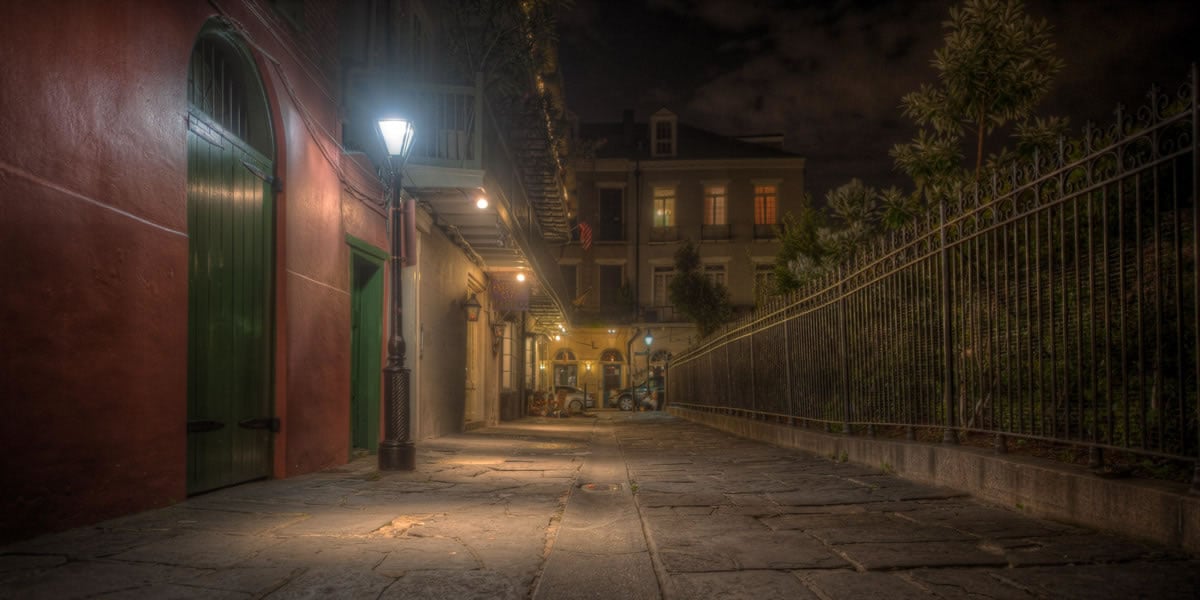
Nestled between the inspiring St. Louis Cathedral and the notable Cabildo is a cobblestoned lined snicket-way called Pirate’s Alley. According to local legend, the infamous privateer Jean Lafitte once met with General Andrew Jackson here to discuss Lafitte’s involving his band of pirates in the Battle of New Orleans in 1815. You can almost imagine the two men squaring off in the early morning, heavy fog billowing around their leather boots, as Lafitte agreed to fight against the British.
(He never did make it to the battle himself, though).
It’s a great image, made even better when the Americans won against the redcoats and all because Jean Lafitte lent his men to the cause. Pirate-Privateers, they’re a resourceful bunch.
Truth is: It’s unlikely that Lafitte and Jackson gathered in such a prominent spot in town, especially when the Louisiana Governor wanted Lafitte’s head on a platter and his brother Pierre had only just been ousted from prison. The nickname “pirate’s alley” has always been there, but it’s unlikely that Lafitte’s ghost has decided to stick around in the afterlife. Sure enough, Lafitte was known to stroll around the French Quarter at ease, even when there were warrants out for his arrest. But would he be so risky as to operate business in an alley that was enclosed by the state building and the old parish prison, not to mention a religious site too?
For all of Lafitte’s faults, he was a smart man. Too smart to get caught by the authorities, and definitely too smart to do any business at all in Pirate’s Alley.
So who is haunting Pirate's Alley?
It’s probably be easier to say who isn’t (ahem, Lafitte), then who is. But it is Pirate’s Alley’s central location that has turned it into a paranormal hub. The garden behind St. Louis Cathedral was first a cemetery plot . . . until space became limited and the living began to exhume the bones of the dead to move them. Plans were made to turn the old graveyard into a garden, as it is now, but it instead became a dueling ground for the hot-tempered Creole men who wanted to settle the score after getting into a fight at one of the nearby ballrooms.
Adjacent to the garden is the Cabildo and the Old Parish Prison. Long-term sentences, executions—even in the nineteenth-century, there were sightings of apparitions or the distinct sounds of rattling chains when no one was about. Pirate’s Alley might not be haunted by the legendary King of Pirates in New Orleans, but it sure is haunted by pretty much everyone else.
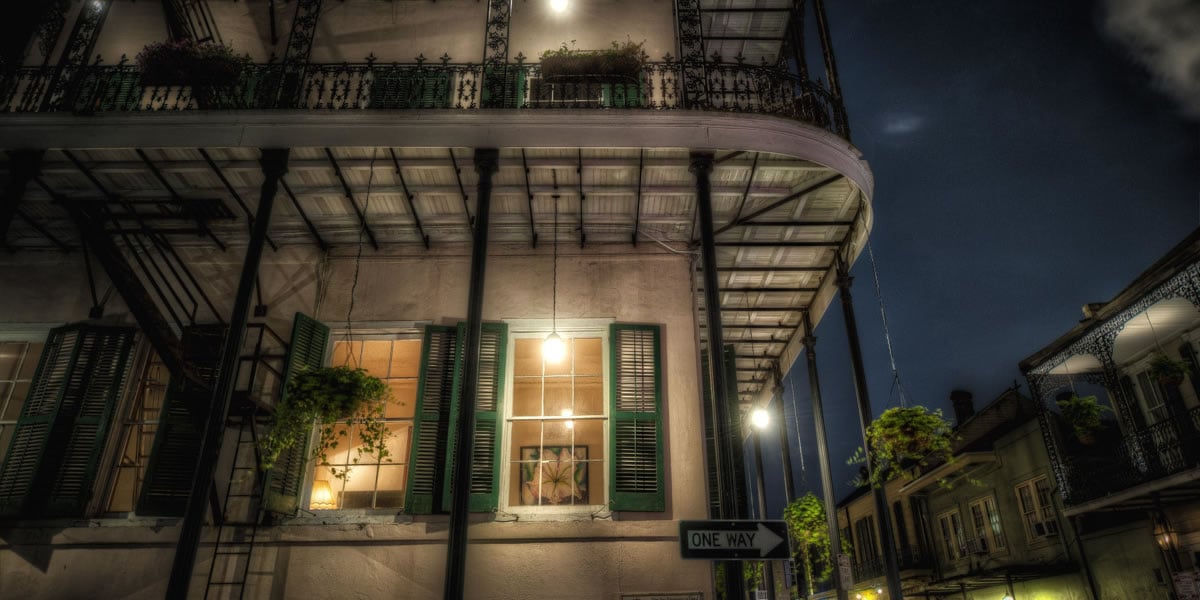
It was a bright, sunny day when the new renters of the Gardette-LePrete House disembarked from their ship and marched down past St. Louis Cathedral and all the way to the beautiful, iron-balconied mansion on the corners of Orleans and Dauphine Streets. First came the women dressed in their finery—part of the Sultan’s harem, apparently; then the bodyguards; followed by some relatives; pulling up the rear was Prince Suleyman himself, a sultan from Turkey.
They came with all of their furniture, and once they’d entered inside their grand mansion, the front door clicked shut and remained that way. Night after night, the exotic sounds of music danced on the breeze . . . and so did, too, the lustrous scent of smoked opium.
Locals in the French Quarter wondered as to the mystery of who was living at the former Gardette-LePrete House, but they were never invited in and certainly the Sultan and his harem never left the property.
Then, one night a dark and tumultuous storm swept into the city. As the story goes, the next morning a boy was racing down the street—so excited was he to have a bit of freedom from being cooped up in the rain—when he noticed the front door of the so-called Sultan’s Palace cracked ajar. Blood trickled down the front steps and he scurried off to fetch the police.
What they found would send anyone to their knees in dismay . . . and in horror. Bodies were flayed, hacked to pieces. Intestines were strung from the ceiling like elaborate chandeliers and the scent of blood—well, it’s said that more than a few of the officers twisted around and vomited. But all was not over, because the Sultan’s body was discovered in the courtyard. And he’d been buried alive.
Gruesome, isn’t it? The Sultan’s Palace still stands today, a major spot for ghost tour groups. Reportedly the spirits of the bodyguards can still be spotted up on the lace-iron balconies, keeping watch. Within the interior of the home, it is said that residual energy from the mass murder still replays over and over again for the residents inside.
. . . Only there’s a bit of a problem. You see, the Sultan never arrived in New Orleans, and at the time of the story—around the 1860s—Turkey was actually the Ottoman Empire. Add to the fact that stories such as these, where foreigners from the Middle East come to a city and then result in a mass murder, were relatively common at the turn of the twentieth-century. No newspaper reports exist from New Orleans’ Welcome of Prince Suleyman, or the subsequent murder, which leads us to . . .
The ghostly legend of the Sultan’s Palace is unfortunately nothing but a hoax created in the early 1900s. And while it makes for an excellently, brutal tale, the Gardette-LePrete House is very much haunted, but for a completely different reason.
We’ll save that particular unknown story for our Ghosts of New Orleans Tour, but if you’re keen to learn more about the actual hauntings occurring at the Sultan’s Palace, check this out.
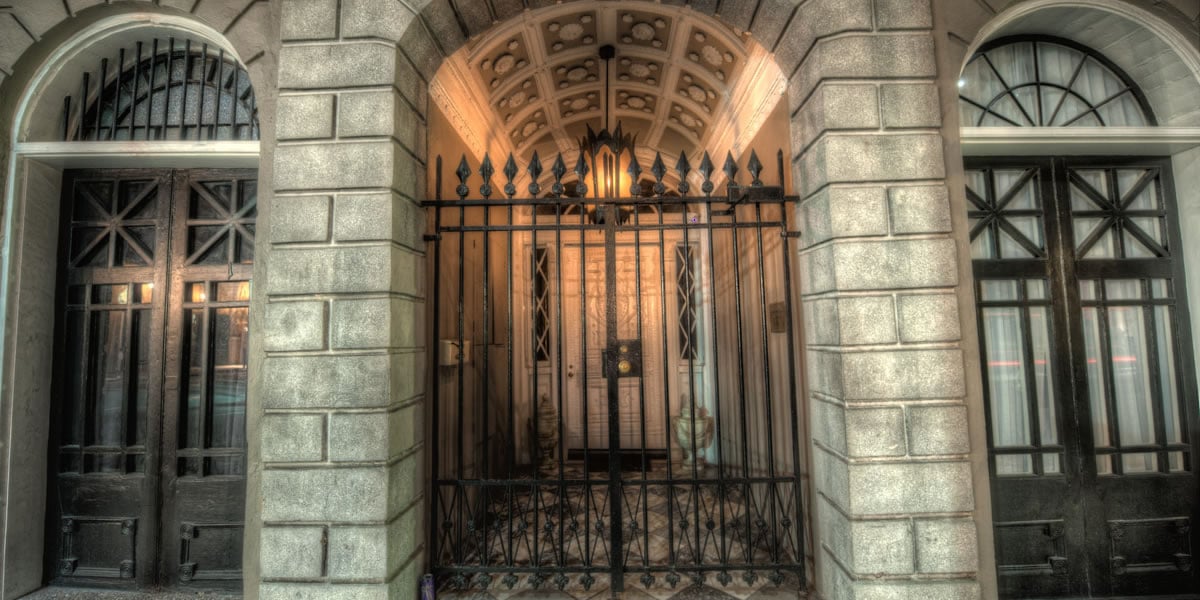
While the TV show American Horror Story put the LaLaurie Mansion on the popular culture map, Madame Marie Delphine Macarty LaLaurie has been a household name in New Orleans since the 1830s.
Incredibly wealthy, Delphine was a two-time widow before she married the much-younger Louis Leonard LaLaurie, a physician from France who had the (mis)fortune to impregnate one of New Orleans’ most wealthy women. They married, Delphine gave birth to yet another child, a son, and the LaLauries proceeded to be the haute-ton of society. Balls, parties—each was more elaborate than the next.
But the LaLauries were not all that they seemed. Within the closed doors of their house on Royal and Governor Nicholls Streets, Delphine and Louie were torturing their slaves in the attic. The horrifying circumstances would not be revealed until 1834 during the midst of a grand party, when a fire caught in the kitchen. Help arrived to put out the conflagration, but an enslaved woman was found chained to the stove. Over and over again she whispered, “the attic,” inciting suspicions that something was wrong.
A group of men ascended to the attic. Upon finding the door locked, they broke it down and stuttered to a halt. The scene before them was one of pure inhumanity: a total of seven or eight slaves were inside, their bodies contorted into all sorts of unnatural positions. Skin was peeled back, exposing the tissue beneath. A hole had been drilled into one of the men’s heads, a spoon sticking out as though there had been an attempt to stir his brains.
By the time the group of men had gathered their wits to go after Delphine and Louis for their dastardly crimes, the LaLaurie couple had already jumped in their carriage and departed for the river, never to be seen again. Legend has it that they returned to New Orleans under false identities and lived out the rest of their days here.
The LaLaurie Mansion is often referred to The Haunted House in New Orleans and, surely enough, if you were to ask a local where such a house was, they would all lead you to the former property of Delphine and Louie.
This ghost story, perhaps more than any other, is more convoluted and distorted. Delphine LaLaurie was torturing her slaves, though her chosen methods did not stray to spoons or sex changes. Instead, she opted for starvation. Neglect. When the injured were helped from the LaLaurie property, they were practically carried by locals to the Cabildo to seek legal action against Delphine.
Which leads us to the next factor: Louis LaLaurie had nothing to do with the crimes. In fact, he’d grown so sick of his wife, their arguments were known all about town. Prior to the fateful fire, Louis had moved out of the mansion and into bachelor’s holdings in a different part of the French Quarter.
And Delphine never did return: a record of her death exists in Paris, France, along with her mausoleum and whatever is left of her body.
So, who is haunting The LaLaurie Mansion today? One of Ghost City’s tour guides likes to say that the only ghosts of this property are that of the living, pestering and making up stories to get a rise out of the dead. But then again, over the years all sorts of stories have come from the property . . .
Is it Delphine? Perhaps, but sure enough, the LaLaurie Mansion still holds the reigns as the most haunted location in New Orleans.
Click here for the full story and the hauntings of the LaLaurie Mansion.
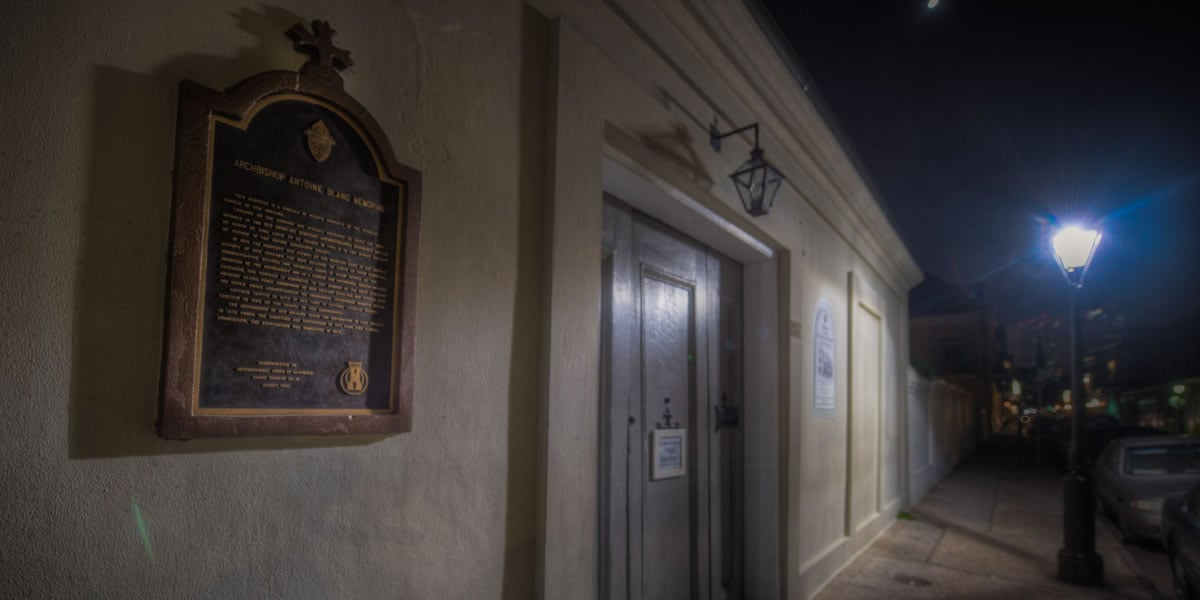
Did you know that New Orleans is the home of the vampire? I know, you’re thinking that vampires originated in Transylvania with Vlad the Impaler (better known as Dracula) back in the Middle Ages. And you’d be right—but New Orleans is home to the American vampire. Very different, especially the accent.
Situated only three blocks away from the Mississippi River is the Ursuline Convent, the oldest structure west of the Mississippi River and also home to those elusive vampires still haunting the streets of the French Quarter today.
The legend goes back all the way to the eighteenth century when the city’s founder, Jean Baptiste LeMoyne Bienville was in need of suitable women to marry the male settlers in New Orleans. He penned King Louis in France asking for marriageable women, and his request was accepted. Not so many months later, a group of women arrived at the port of New Orleans.
They were pale, their skin glistening under the heat of the Louisiana sun. Some were sick from their travels, and all allegedly carried their belongings in luggages shaped like caskets. Befittingly they were named the Casket Girls, and all were shepherded along to the Ursuline Convent where the nuns would watch over them until their weddings could be arranged.
Only, it was said that the Casket Girls brought something with them in those casket-shaped suitcases. They had brought with them the undead.
The caskets were put in the third floor of the convent and left there even after the girls were properly wedded off. When later the nuns went to retrieve the suitcases, no items were found inside. They realized that the vampires had been turned loose to prey on the citizens of New Orleans.
Deaths were attributed to these undead creatures, even surpassing the following centuries.
But it was in the 1970s that the vampire legend seemed to become based in fact when a pair of journalists/paranormal enthusiasts camped out on the grounds of the Convent. They trained their cameras up to the elusive third floor of the convent, so that they could see whether the bolted windows would swing open and let loose the vampires. Sometime in the middle of the night, they fell asleep and the cameras stopped rolling.
When people wandered by in the morning hours, it was only to find both men died, their bodies completely drained of blood.
The vampires were out and still prowling through the French Quarter for their next bloody meal.
. . . Great story, is it not? Obviously we don’t have to do much in the way of explaining why the Ursuline Convent isn’t home to vampires, but it is actually haunted.
(And for those wondering what in the world is up there on the attic level: Archives, y’all. Lots and lots of archives and perhaps even a few relics. Those items might be as old as the vampires themselves, but certainly there is nothing ‘secret’ about what’s going on on the upper floors of the Ursuline Convent).
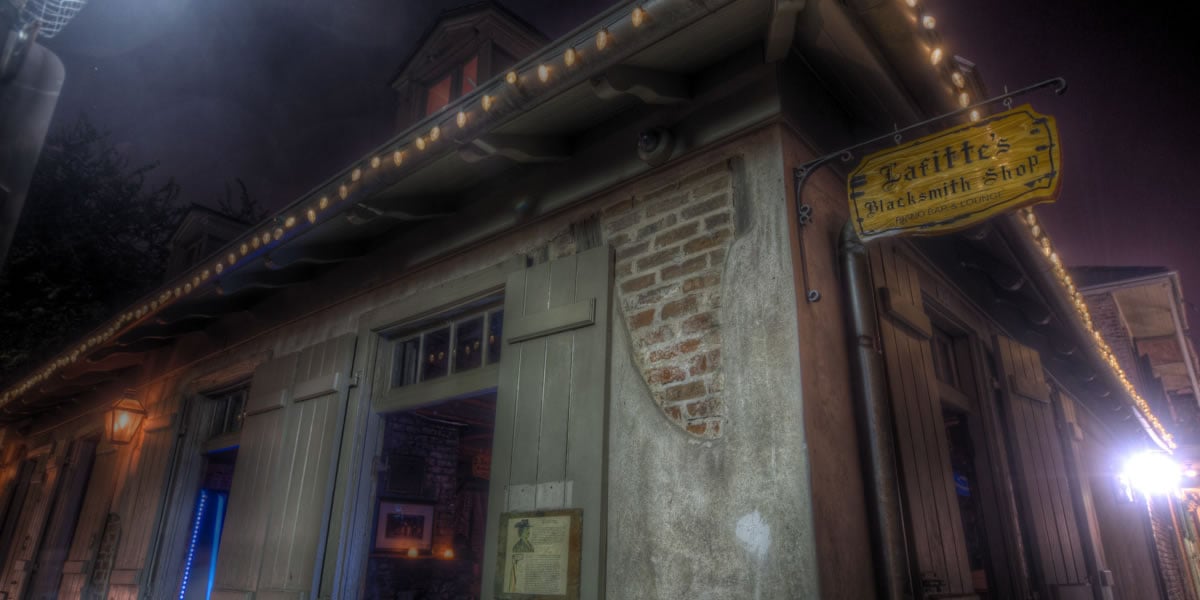
As the country’s oldest operating bar, Lafitte’s Blacksmith Shop on Bourbon Street is a sight to behold: gray stuccoed walls, exposed brick and a pitched slate roof make Lafitte’s one of the most eye-catching establishments in the French Quarter. With just a single glance, one immediately comes away with the notion that the property is old as sin and has seen a lot in its day.
According to local lore, the notorious privateer Jean Lafitte once operated his smuggling business out of the current-day bar. His ghost has been seen inside, near the men’s bathroom. True to form, his spirit is lean and tall, with a hat settled over his head and a mustache gracing his upper lip. Lafitte’s spirit never says a single thing before he suddenly disappears from sight.
Unfortunately, as even the bar’s website says, Lafitte never did own the shop.
But, there is a chance that he frequented the area although not for the reasons advertised by the bar itself or by ghost tour groups. Adjacent to Lafitte’s Blacksmith Shop is the Lafitte Guest House and Gallery, a boutique hotel with a much better claim to the the infamous privateer. As it would happen, Lafitte’s brother Pierre had set up his mistress to live in what is now the hotel. She lived there for a few years with her and Pierre’s children, and was joined by her sister . . . who just so happened to be Jean Lafitte’s mistress, and who also bore him a child.
(The plot thickens).
Naturally, Jean Lafitte and his brother Pierre would have probably roamed the area, but it’s suspected that if he did have a secret smuggling location in town, it would not have been in Pirate’s Alley, nor the current-Lafitte’s Blacksmith Shop but at a location that has since been demolished.
Even so, the bar has its own particular hauntings. The spirit of a woman has been seen by employees in the upstairs office. Apparently she’s quiet chatty, although creepily enough, the only thing she ever says is your name.
And then downstairs, patrons of the bar have seen something even stranger, something darker, peering out of the original fireplace: a pair of red, glowing eyes that locals claim to be a demonic entity.
It seems that the spirits served at the establishment, which are known to knock you off your feet, are the least of your worries at this two-century old bar.

Was this the site of a grizzly mass murder?
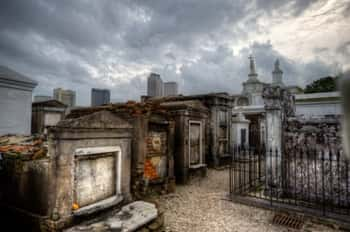
New Orleans' most haunted Cemetery
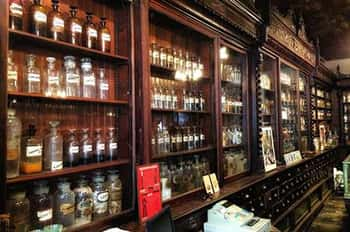
Who haunts this museum, and why?